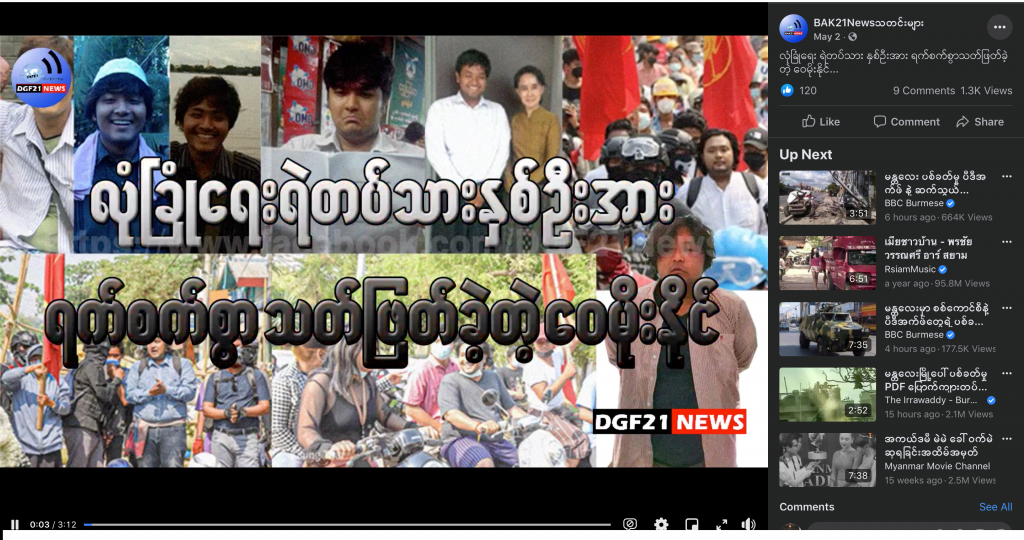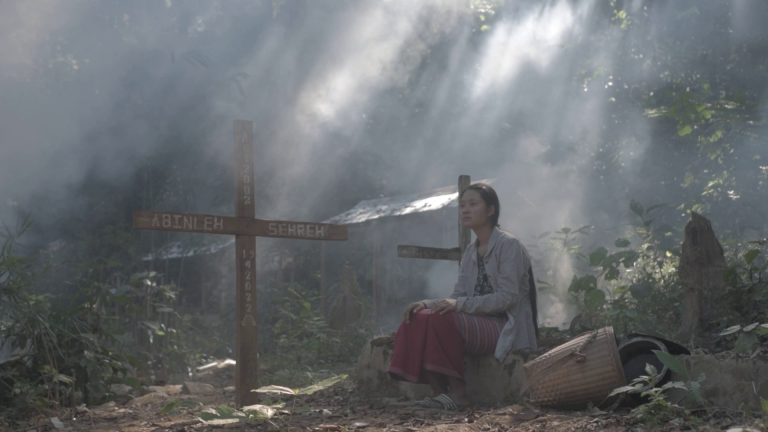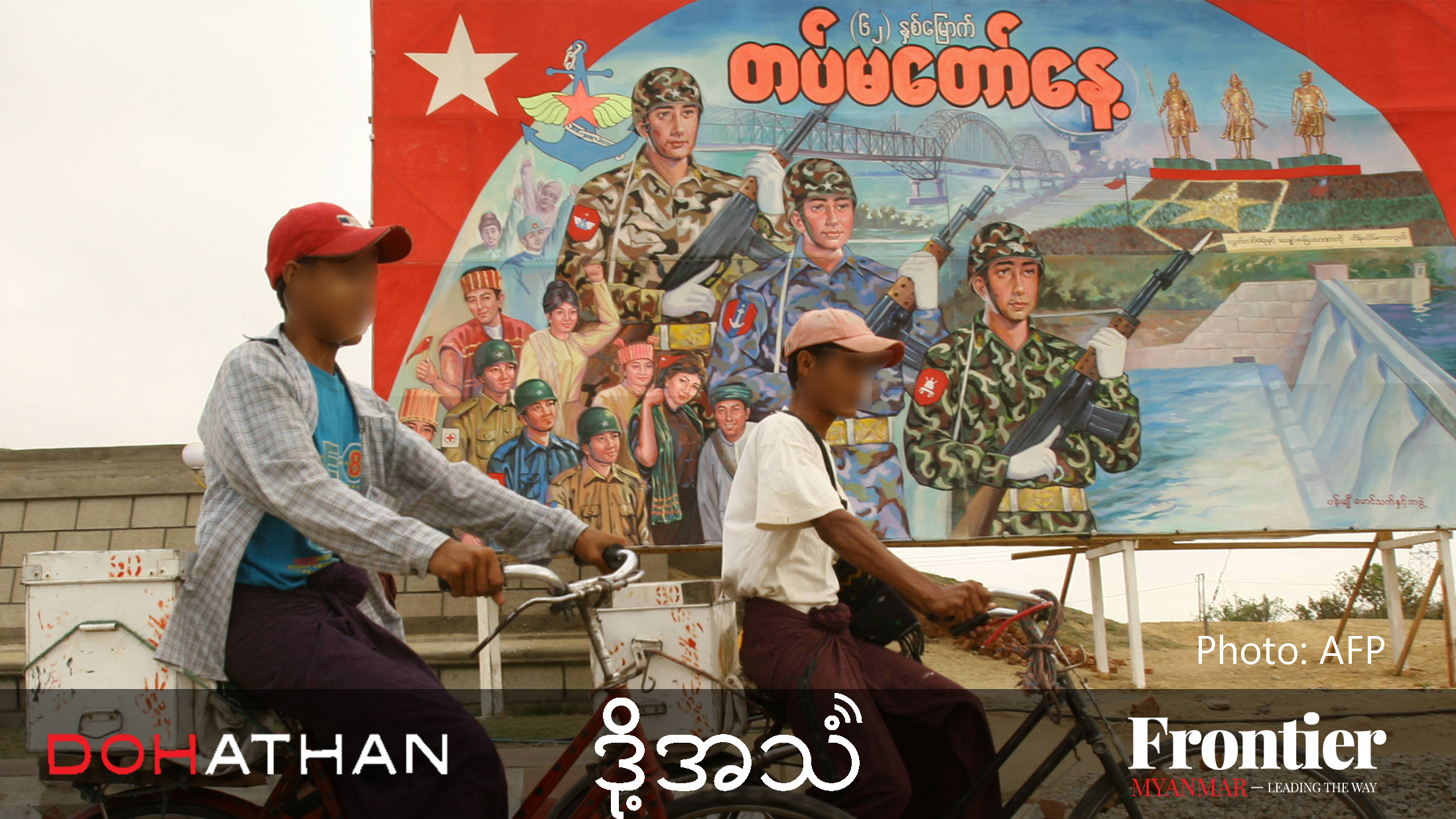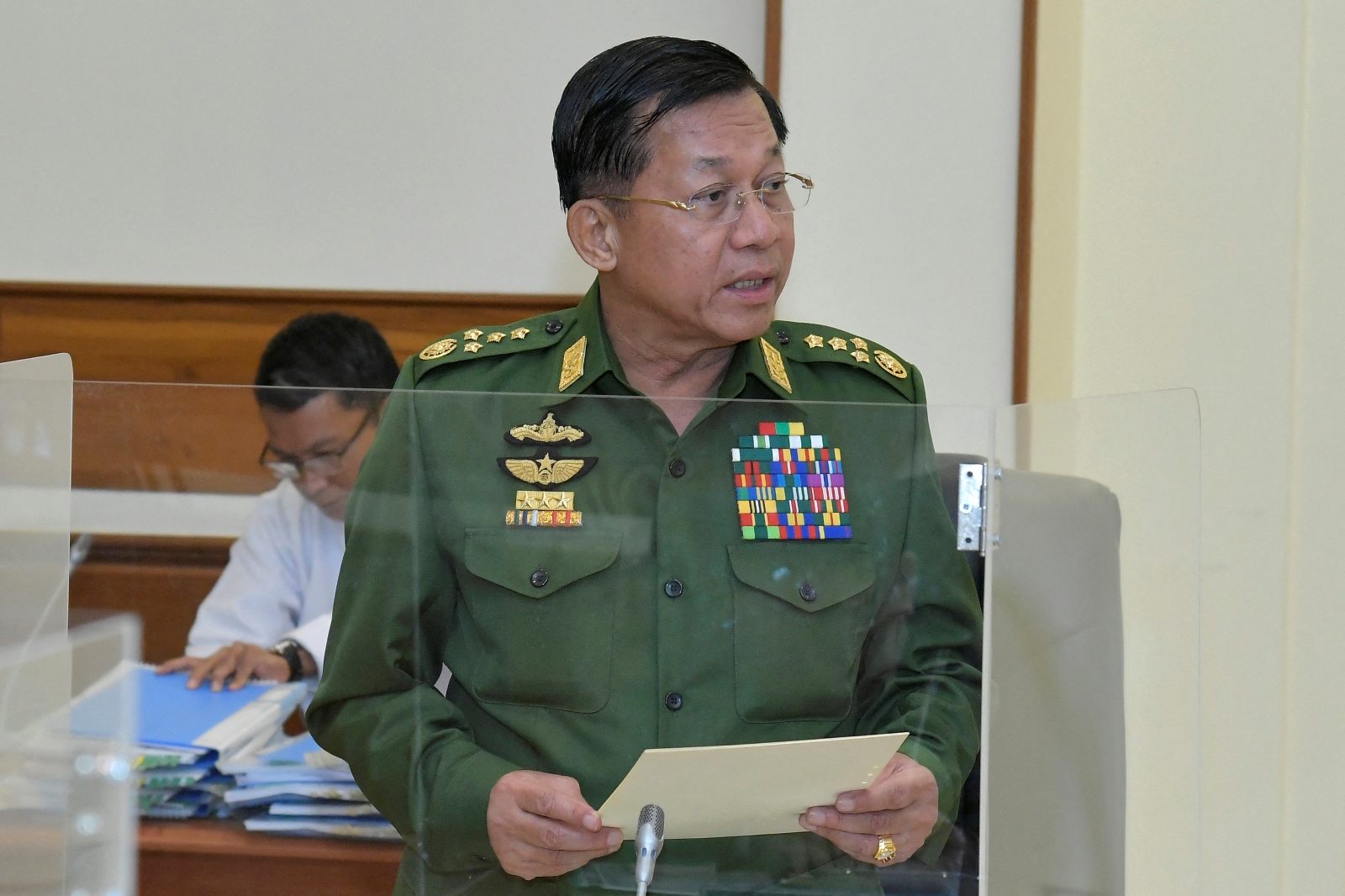State media and pro-military social media users are increasingly comparing civilian resistance fighters to Islamic terrorist groups, and spreading disinformation that blames Muslims for attacks.
By ANDREW NACHEMSON | FRONTIER
As increasing numbers of pro-democracy protesters have turned to armed revolt and guerrilla warfare in recent weeks, the military and its supporters have followed suit – with their propaganda, that is. Social media posts on platforms like Facebook and TikTok have equated protesters who take up arms with Islamic terrorist groups like the Taliban and ISIS, and even suggested, without evidence, that Muslims are behind the attacks.
These developments are especially concerning given the deeply rooted Islamophobia in Myanmar and its recent history of mass violence against the Muslim Rohingya minority, which was partially fueled by online hate speech and disinformation.
In the face of brutal crackdowns on peaceful protests that have so far killed nearly 900 civilians, opponents of the February 1 military coup have begun fighting back – staging armed uprisings in rural areas and employing guerrilla tactics in urban centres. Bomb attacks and assassinations have targeted security forces, regime officials, and those thought to be sympathisers. Even education facilities have been burned and bombed as the junta attempts to forcibly reopen schools amid a widespread boycott, although pro-democracy forces have largely denied involvement in those attacks.
This propaganda narrative first gained mainstream popularity after a Facebook post by U Ye Htut, who was a minister for information in the military-aligned Union Solidarity and Development Party government. His post, from May 16, has over 62,000 reactions and nearly 7,300 shares. (About 29,000 are laughing reactions and another 900 are angry reactions).
“The school was bombed. Burning means killing students and teachers for learning something they do not want taught. The bombing of a school in Afghanistan has become synonymous with the actions of Taliban insurgents,” Ye Htut wrote. He went on to claim that although the Tatmadaw had fought many campaigns against ethnic insurgency groups, ethnic armed organizations had never targeted schools.
“The Taliban are not working for democracy. Following the Taliban is not democratic,” he concluded.
School attacks denied
A member of the Anti-Fascist Armed Forces in Yangon denied that pro-democracy groups are targeting schools, saying “attacks on children will not at all be tolerated”. He further asserted that if the resistance endangered civilians, it would lose the support of the people, which is necessary for the revolution’s success. “It is important that we stay close to these people … the people’s militia is fighting from the people’s chest,” he said.
Still, the comparison of resistance fighters to ISIS and the Taliban has proliferated across social media, mostly within pro-military Facebook groups, and gradually dovetailed with more general anti-Muslim sentiment, which has also been on the rise.
This narrative has even received the junta’s seal of approval, making its way into state media and government meetings. Military-controlled Myawady TV aired an interview on May 22 with a monk who claimed National League for Democracy supporters burned down a village in Magway Region, contrary to witness accounts that blamed the Tatmadaw.
“Only Taliban and NLD supporters’ groups are setting fire to schools in the world,” the monk said.
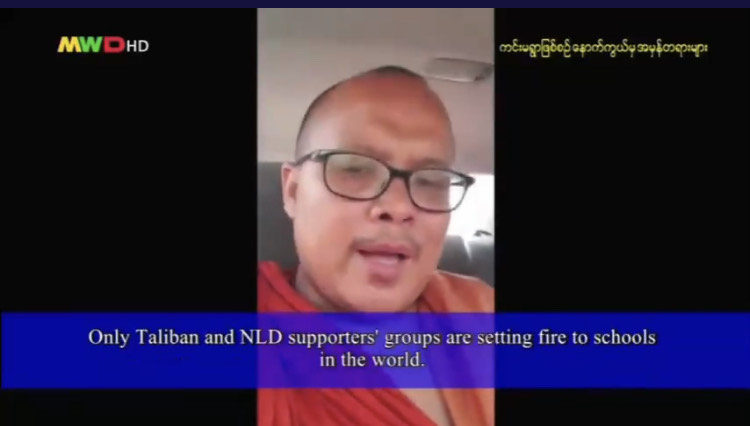
On May 24, a user in a Meiktila News group with over 70,000 followers posted that a police station at Moebye in southern Shan State’s Pekon Township was captured by “the Taliban group”, in a Facebook post that has since been removed. He claimed that the military then retaliated, leaving “more than 150 Taliban corpses” and taking 100 prisoners. The post showed images of tanks and military helicopters, some of which were lifted from elsewhere on the internet. The picture of helicopters was taken from an article about test-flying model aircraft in Texas.
On May 17 – a day after Ye Htut’s post – another Facebook user accused “Taliban GZ” of bombing schools and education offices (“GZ” is a reference to Generation Z, which has been at the forefront of resistance). On May 22, about a week after Ye Htut’s post, a Facebook user posted in a pro-military group with over 20,000 members that the “most widely used term” both online and offline to refer to the pro-democracy movement is the “Burmese Taliban. Like the post five days earlier, the author also referred to them as “Taliban GZ”.
“If the GZ youths are given the title Taliban GZ, the NUG and CRPH that are commanding them must be identified as ISIS,” the user continued, before claiming that both the Taliban and ISIS had eventually failed. “Extremist terrorist groups NUG and CRPH, like the terrorist Taliban GZ and ISIS, will soon end,” it said.
The National Unity Government is a parallel government formed by the Committee Representing Pyidaungsu Hluttaw, a group of MPs-elect from the November 2020 election, the results of which the military has refused to recognise. The junta has declared the NUG, CRPH and their armed wing, the People’s Defence Force, as terrorist organisations.
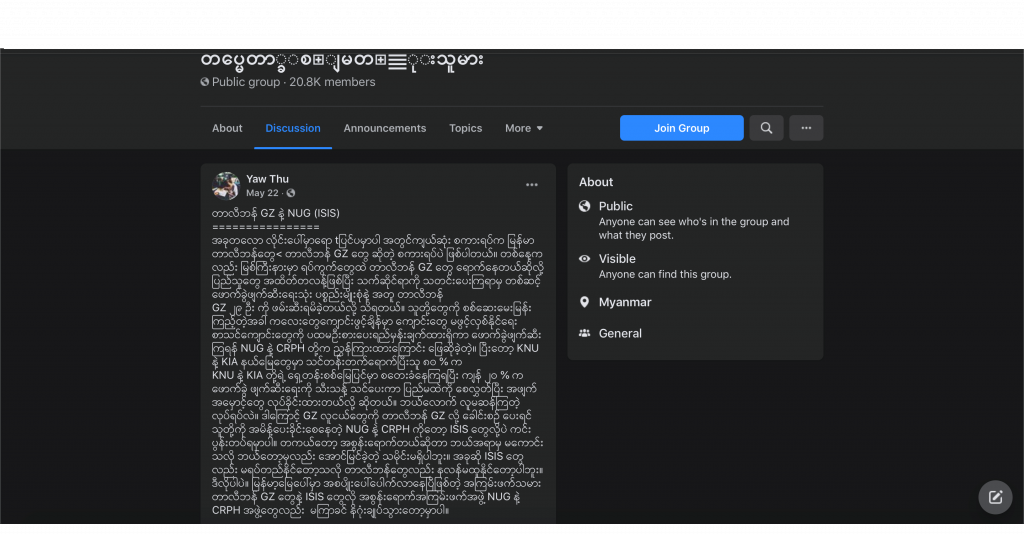
An unlikely connection
During a recent meeting of the junta’s Anti-Terrorism Central Committee, officials apparently sought to draw a connection between the pro-democracy groups and the Arakan Rohingya Salvation Army. In 2017, ARSA launched attacks on police stations in northern Rakhine State, prompting a brutal “clearance operation” by the Myanmar military that killed thousands of Rohingya and sent over 700,000 fleeing across the border to Bangladesh. Although the United Nations and rights groups described the violence as ethnic cleansing or genocide, the NLD government sided with the military, justifying and defending its actions.
A state media report on the meeting said officials also “discussed the legal actions to take against the terrorist groups CRPH, NUG, PDF and their partners for communicating with international terrorists and ARSA to grab the State power by force”. There is no evidence of cooperation between ARSA and the pro-democracy movement.
The NUG’s defence minister, U Yee Mon, rejected the terrorist label in a Facebook post on June 15. It is “fair to take up arms against the military council which forcibly took power from the people’s government and is committing all kinds of war crimes against ethnic people,” he said, adding, “The people will decide who the terrorists are.” He did not respond to requests for comment from Frontier.
Meanwhile, the frequency and intensity of anti-Muslim posts has also been increasing in military circles. On May 2, a pro-military Facebook outlet called BAK21News posted a three-minute video clip attacking prominent Muslim protest leader Ko Wai Moe Naing, who was struck by a vehicle and arrested in Monywa on April 15 after leading regular demonstrations in Sagaing Region. Wai Moe Naing has been the subject of conspiracy theories spread by the junta and its supporters, who claim without evidence that he killed police officers and raped a woman.
“Wai Moe Naing brutally killed two policemen in front of his people because he is a Muslim. He has been supported by the OIC since he was a student,” the video claimed, referring to the Organization of Islamic Cooperation, which has been the subject of many unfounded conspiracy theories in Myanmar, usually related to the Rohingya. The video accused Wai Moe Naing of working with U Ko Ni, a Muslim lawyer and adviser to the Daw Aung San Suu Kyi who was assassinated in 2017, to try to “convert Burma into an Islamic land”.
Disinformation galore
The video containing the allegations against Wai Moe Naing received over 1,000 views on Facebook, but really took off on TikTok, which has emerged as a disinformation breeding ground in recent months. There, it had over 71,000 views before it was removed.
Another post, which has since been removed, falsely claimed that Aung San Suu Kyi promised the OIC she would “nominate a Burmese-born Muslim to be president” after the 2020 election. “She will completely eradicate Buddhism, she signed that pledge,” the post claimed. It further alleged that the OIC was funding the NLD, the Civil Disobedience Movement and independent media outlets such as The Irrawaddy and Mizzima. The post wrapped other unfounded allegations into the anti-Muslim conspiracy, claiming that OIC money funded Aung San Suu Kyi’s charitable works. The deposed leader is facing corruption allegations for allegedly taking bribes and renting land for her foundation at a discounted rate in a trial that many see as a sham.
The anti-Muslim narratives are a key part of justifying the military’s claim to be the protector of the nation, particularly the Bamar race and the Buddhist faith.
On June 8, a TikTok user whose profile picture is of Min Aung Hlaing, posted a clip from the 2012 communal violence in Rakhine State. The video, which received over 120,000 views, also claimed the NLD was like the “Taliban” and working with the Rohingya, who it said “are not from Myanmar”. It went on to claim, “the former majority Buddhist population has been reduced to about 3% now, because of killings, ethnic cleansing and intimidation. The Muslims want the Buddhists to be zero.”
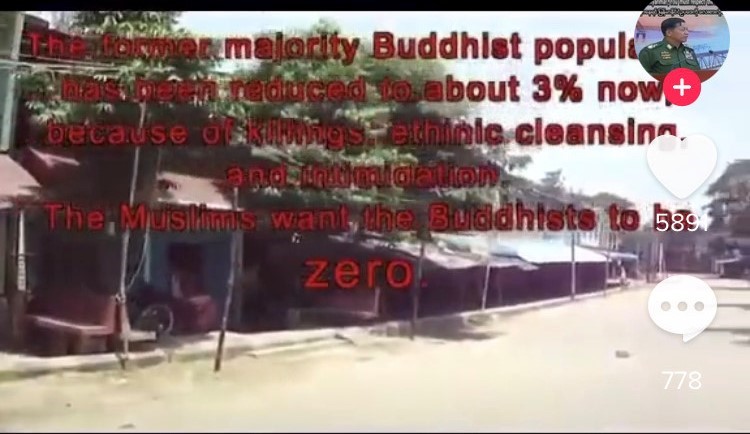
The Burma Human Rights Network, which also monitors social media use in Myanmar, said pro-military social media users and outlets have been “increasingly targeting” Muslims since early June. “The fascist military has a history of religious persecution and using the religious minorities as a scapegoat to divert attention,” said BHRN president Ko Kyaw Win.
He said the online attacks have been coupled with real world violence. “Noticeably, arson attacks on mosques and deliberately shooting towards churches are becoming more frequent,” he said. BHRN accused the Tatmadaw of burning a mosque in Yangon’s Ahlone Township, among other recent attacks on religious minorities.
Fanciful claims
Pro-military Facebook users have increasingly begun to blame Muslims for attacks carried out by local anti-military militias. One Tatmadaw supporter posted on June 22 about the shootout between members of the armed forces and the PDF in Mandalay city. He said that “immigration staff joined the Tatmadaw” during the raid, because “Muslims were involved with the PDF”, before using multiple derogatory terms to refer to their skin colour. “PDF and Muslims, 12 killed and four arrested,” he wrote in the post which received over 3,000 likes and more than 600 shares.
No independent media reports indicated that any of the fighters were Muslim, or that immigration staff were involved, and none put the death toll as high as 12.
In an instance of targeted harassment, a pro-military Facebook account accused another user of being behind a grenade attack on a military vehicle in Yangon’s Tarmwe Township on June 18, just because he had posted in support of it. The post, which was shared over 1,100 times, said the alleged bomber was a “Muslim” and “GZ terrorist who supports the Rohingya cause”, because he previously posted in support of the Rohingya. The user targeted by the post seems to have since deleted their account.
The Anti-Fascist Armed Forces group claimed responsibility for that attack, and a handful of others in Yangon, but rejected accusations that it was religiously motivated. The group’s leader told Frontier the accusations were a “propaganda scandal” and said the military and its supporters “always use religious conflict as their weapon”. He said the group does include some Muslims, but also “people of all faiths, races and genders who oppose fascism”. He said they have no religious orientation but are united by a common goal: “We are against the military dictatorship.”


